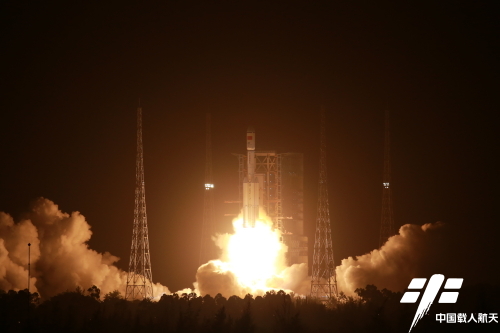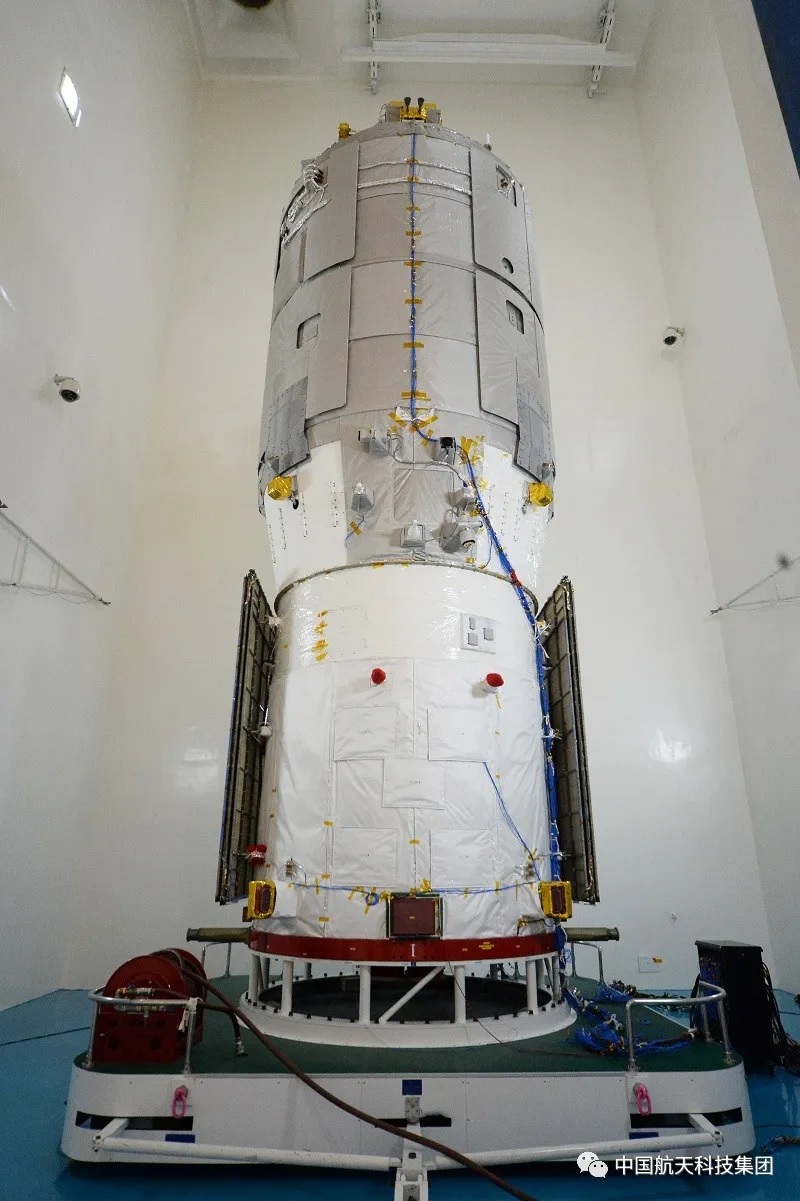China's new space station module is about to get its first robotic visitor.
The Tianzhou-2 cargo spacecraft launched from Wenchang Satellite Launch Center on China's Hainan Island today (May 29), rising off the pad atop a Long March 7 rocket at 8:55 a.m. EDT (1255 GMT; 8:55 p.m. local time). It deployed its solar arrays as expected and is in good health, according to the China Manned Space Engineering Office (CMS).
The uncrewed Tianzhou-2 is carrying 4.69 tons of pressurized cargo and 1.95 tons of propellant, CMS officials have said. If all goes according to plan, the freighter will haul these goods to Tianhe, the 22.5-ton core module of China's planned space station, which launched to low Earth orbit on April 28.
Related: The latest news about China's space program

The delivery will help prepare Tianhe for the arrival of astronauts. And the module's first crew is coming soon: The three-person Shenzhou-12 mission is scheduled to launch toward Tianhe next month.
Tianhe ("Harmony of the Heavens") is the central piece of China's first space station, a three-module, 66-ton structure that the nation aims to have fully assembled by the end of 2022. It will take a total of 11 launches to build and supply the orbital outpost, the first two of which are now in the books.

The space station project has been in the works for about 30 years, and China gained a lot of orbital-assembly experience over the past decade. In September 2011, for example, the nation launched a prototype space lab called Tiangong-1, which hosted three-astronaut crews in 2012 and 2013. Both of those crewed missions spent about two weeks aboard the space lab.
Get the Space.com Newsletter
Breaking space news, the latest updates on rocket launches, skywatching events and more!
China launched Tiangong-2 in September 2016 and sent three astronauts to the lab for a three-month stay that October. In April 2017, the Tianzhou-1 cargo spacecraft met up with Tiangong-2, performing a series of docking and refueling exercises over the next five months.
Neither of those prototype space labs remains aloft. Tiangong-1 fell to Earth in an uncontrolled fashion in April 2018, burning up over the southern Pacific Ocean. Mission controllers steered Tiangong-2 down for a much more orderly demise in July 2019, also over the South Pacific.
Like Tiangong-1, the core stage of the Long March 5B rocket that launched the Tianhe module crashed back to Earth out of control. Its pieces splashed down in the Indian Ocean on May 8 after 10 controversial days in orbit, during which some experts and exploration advocates, including new NASA chief Bill Nelson, accused China of behaving carelessly when it comes to space junk.
There will be no such issues following the Tianzhou-2 launch; the Long March 7's first stage does not reach orbit, coming down instead in a preselected disposal zone in the ocean.
Today's launch was originally scheduled for May 19, but it was pushed back by apparent technical issues.
Mike Wall is the author of "Out There" (Grand Central Publishing, 2018; illustrated by Karl Tate), a book about the search for alien life. Follow him on Twitter @michaeldwall. Follow us on Twitter @Spacedotcom or Facebook.
Join our Space Forums to keep talking space on the latest missions, night sky and more! And if you have a news tip, correction or comment, let us know at: community@space.com.

Michael Wall is a Senior Space Writer with Space.com and joined the team in 2010. He primarily covers exoplanets, spaceflight and military space, but has been known to dabble in the space art beat. His book about the search for alien life, "Out There," was published on Nov. 13, 2018. Before becoming a science writer, Michael worked as a herpetologist and wildlife biologist. He has a Ph.D. in evolutionary biology from the University of Sydney, Australia, a bachelor's degree from the University of Arizona, and a graduate certificate in science writing from the University of California, Santa Cruz. To find out what his latest project is, you can follow Michael on Twitter.









